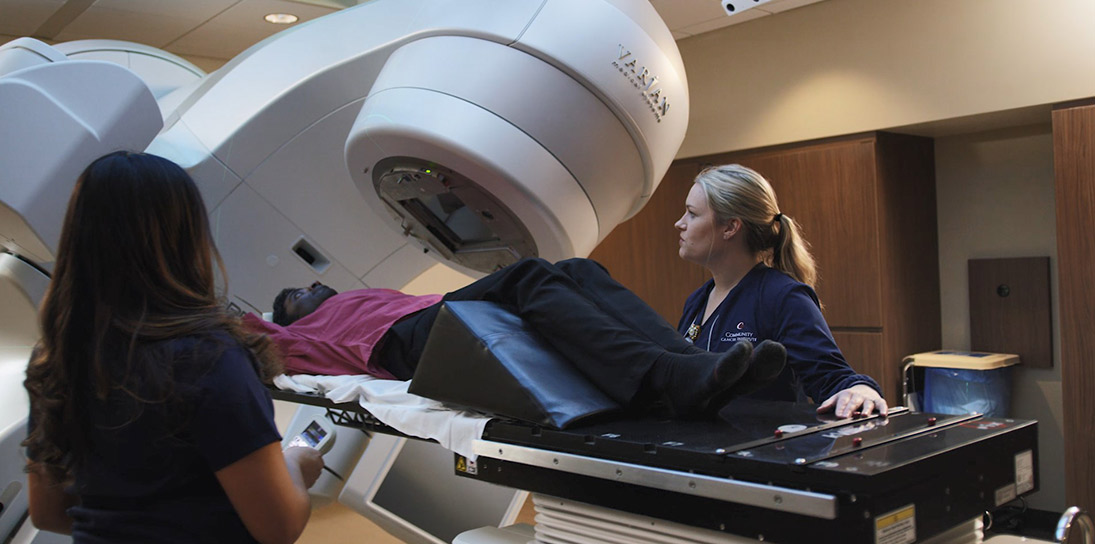
There are around 100 billion neurons in the brain, each capable of generating their own impulses and receiving and transmitting impulses from neighboring cells. This process can be interrupted by disease — ranging from birth defects through degenerative diseases like Parkinson's disease and Alzheimer's.
 We're proud to be home not only to some of the best doctors in the field, but also to some of the most advanced equipment in the world.
We're proud to be home not only to some of the best doctors in the field, but also to some of the most advanced equipment in the world.
Thanks to these technologies, our neurosurgeons are able to treat conditions that were once deemed inoperable. Many surgeries that once required major incisions and lengthy recovery times can now be performed using minimally invasive instruments. The equipment is accurate to the millimeter, giving doctors instant data during some of the most complicated procedures.
Biplane Angiography
We’re home to the region’s only biplane angiography system. This equipment provides detailed images of blood vessels from two different angles. It reduces diagnostic and procedure time while helping avoid more invasive procedures.
This advanced, minimally invasive technology is used to diagnose and treat stroke and other neurological conditions, including:
Brain aneurysms
Carotid artery blockages
Brain and neck tumors
Intracranial hemorrhages
Arteriovenous malformations
O-arm Imaging System
This multidimensional surgical imaging platform feeds live images to a computer screen located just inches away from the surgeon’s hands.
The O-arm system produces the high-resolution imaging needed to achieve minimally invasive procedures and consistently improve patient outcomes.
CyberKnife®
The CyberKnife® stereotactic radiosurgery system is a revolutionary piece of equipment that delivers a concentrated dose of radiation to lesions deep within the body without open surgery.
CyberKnife® destroys tumors with radiation while sparing surrounding healthy tissue, even if the tumor is moving. With pinpoint accuracy and from any angle imaginable, CyberKnife® enables physicians to target high-dose radiation at hard-to-reach tumors that otherwise might be impossible to treat.
Because of its ability to deliver high-dose radiation with absolute precision, CyberKnife® can in some cases even reduce the number of treatments necessary. This means you can get back to your normal activities sooner.
The procedure is painless and noninvasive. Community Regional Medical Center was the first medical center in the world to utilize this generation of the technology.
O-arm Pentero Microscope
This revolutionary microscope for neurosurgery and spine surgery offers tremendous improvement of the depth and light of the operating field and does not move even when repositioned.
The enhanced microscope enables our surgeons to visualize the smallest vessels with magnification levels up to 39x. Helping our surgeons find lesions that are small and located deep within the body.
StealthStation®
Our StealthStation® uses some of the most advanced surgical technology in the world. This navigation system is versatile enough to be used effectively for brain, spine, orthopedics and ear, nose and throat surgeries.
The StealthStation® uses preoperative scans to translate a diagnostic scan into a precise 3-D image displayed on an operating room monitor. These scans indicate the least invasive path to the target area in your body.
NPi-300 Pupillometer
The NPi-300 Pupillometer is a handheld device that accurately measures pupil size in response to light stimulus. This device takes 30 pictures per second of the pupil, which is the center of the eye and that allows in light.
Information gathered from pupillary assessment is used in the diagnosis and treatment of neurological conditions, including traumatic brain injury (TBI), stroke and seizure.
We use cookies and other tools to optimize and enhance your experience on our website. View our Privacy Policy.

